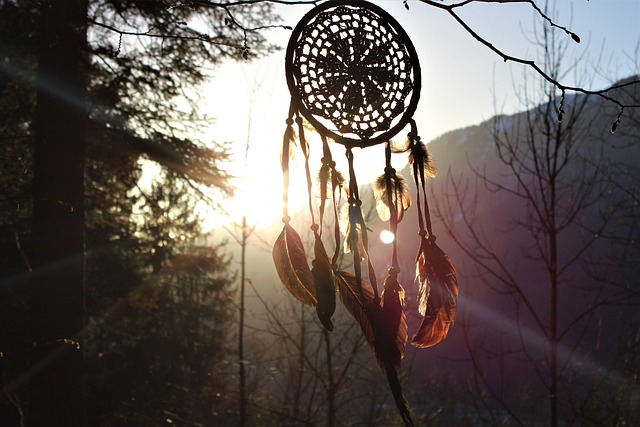Dreamcatchers, with their intricate woven webs and dainty feathers, have captivated the hearts of many for centuries. But what exactly is the meaning behind this traditional Native American craft? In this blog post, we will delve into the rich history and cultural significance of the dreamcatcher, exploring its origins among the Ojibwe people and its continued relevance in contemporary times. From its symbolism of filtering out bad dreams to its representation of spiritual growth and connection, discover the mystical powers of the dreamcatcher.
A Dreamcatcher is a handmade craft that originated among the Ojibwe people of North America. The traditional dreamcatcher is a hoop made of willow branches, woven with sinew or cord, and decorated with feathers, beads, and other items. The dreamcatcher is believed to filter out bad dreams, allowing only good dreams to reach the sleeper. The web in the dreamcatcher represents the spider, a symbol of creativity and the ability to weave one’s own reality. The feathers hanging from the dreamcatcher represent the breath of life and the good dreams that come with it. Dreamcatchers are often hung above a person’s bed or in a sacred space.

Dreamcatchers are also used as an important cultural symbol, representing the connection between the physical and spiritual worlds. They are said to bring good luck and to promote harmony and balance. They are also used as a reminder of the beauty and wisdom of the natural world.
Some people believe that dreamcatchers are not only a symbol of protection and good dreams but also of healing and spiritual growth. The dreamcatcher is a reminder of the beauty and wisdom of the natural world and the importance of living in harmony with it. The dreamcatcher is a symbol of the interconnectedness of all things and the power of the spiritual realm to guide and protect us.

